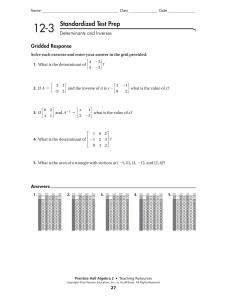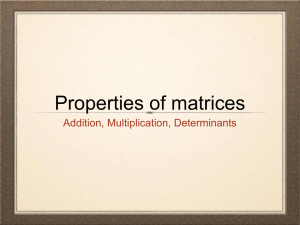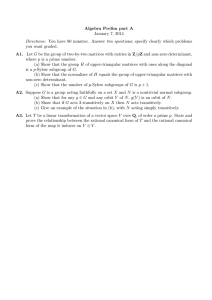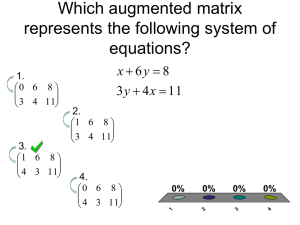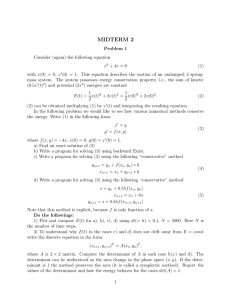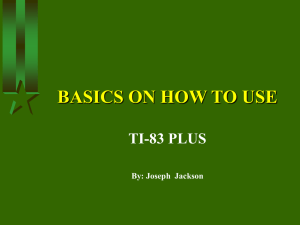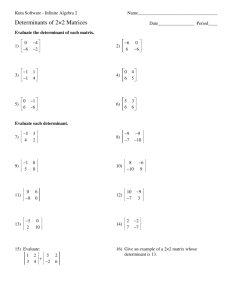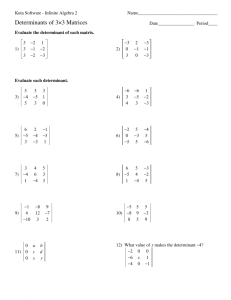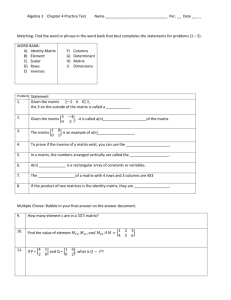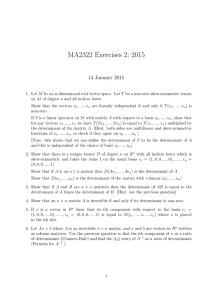M I T
advertisement
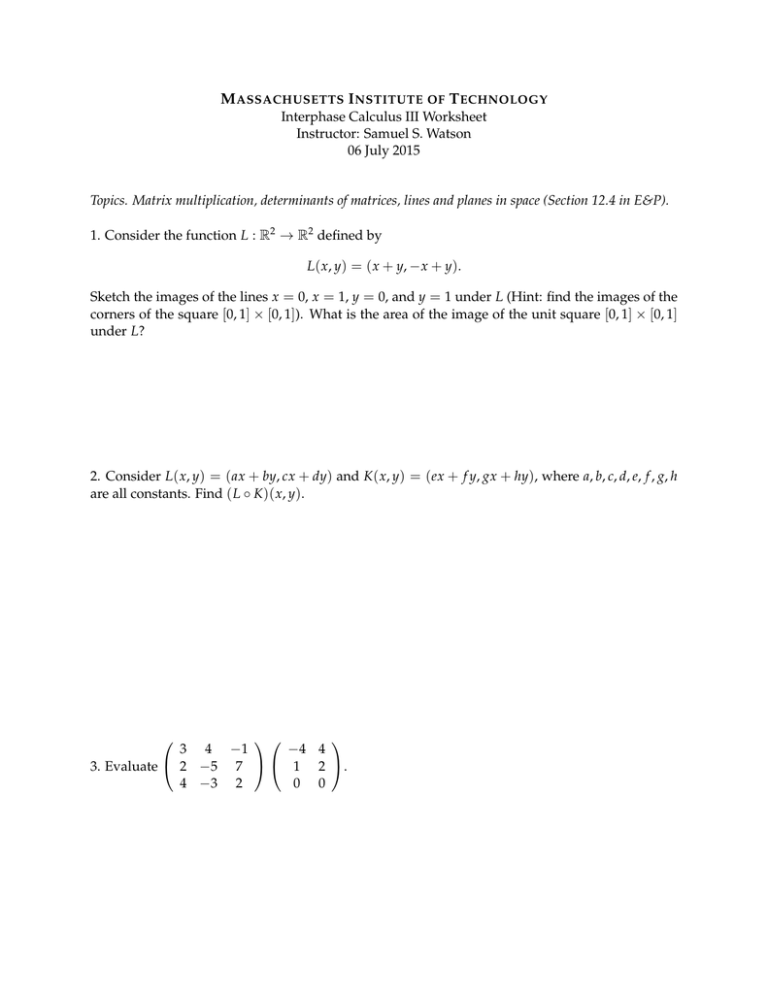
M ASSACHUSETTS I NSTITUTE OF T ECHNOLOGY Interphase Calculus III Worksheet Instructor: Samuel S. Watson 06 July 2015 Topics. Matrix multiplication, determinants of matrices, lines and planes in space (Section 12.4 in E&P). 1. Consider the function L : R2 → R2 defined by L( x, y) = ( x + y, − x + y). Sketch the images of the lines x = 0, x = 1, y = 0, and y = 1 under L (Hint: find the images of the corners of the square [0, 1] × [0, 1]). What is the area of the image of the unit square [0, 1] × [0, 1] under L? 2. Consider L( x, y) = ( ax + by, cx + dy) and K ( x, y) = (ex + f y, gx + hy), where a, b, c, d, e, f , g, h are all constants. Find ( L ◦ K )( x, y). 3 4 −1 −4 4 3. Evaluate 2 −5 7 1 2 . 4 −3 2 0 0 4. Repeat #1 with the linear transformations represented by the following matrices. 2 0 3 2 0 1 1 0 0 2 0 2 −1 0 0 −1 a b 5. The determinant of is defined to be ad − bc. Find the determinant of each of the c d matrices in the previous exercise. 6. Find the determinant of the following matrix. 3 1 −5 4 2 6 −1 4 3 7. Define i = (1, 0, 0), j = (0, 1, 0), and k = (0, 0, 1), and expand the following “determinant” by minors along the first row. i j k u1 u2 u3 v1 v2 v3 8. Describe the line in R3 passing through the points (3, −4, 1) and (2, −1, 4). 9. Find the equation of a plane passing through (3, 0, −7) and perpendicular to the vector (−3, 2, −1). 10. Find the distance between the planes x + y − 2z = 3 and x + y − 2z = 0. 11. Consider the line ` given by the parametric equation ( x (t), y(t), z(t)) = (1 − 2t, 3, t). Find the shortest distance from ` to a point on the line m which is parallel to ` and which passes through the point (9, 4, 1).

